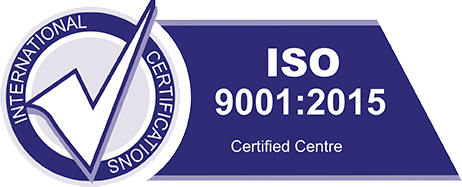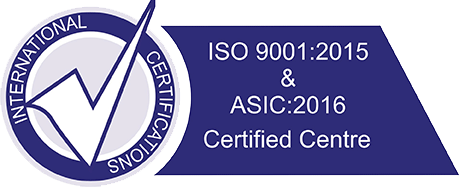A morphologically normal human sperm has a smooth oval shaped head and a long tail at the distal end. Morphology is an important factor in a semen analysis while evaluating male infertility. According to WHO the normal sperm morphology should be more than 4% normal forms. Though an abnormal shaped sperm can fertilise an egg there is a definite difficulty in getting a pregnancy. The main causes of abnormal sperm morphology are a genetic trait, exposure to toxic chemical like paints etc, smoking, alcohol and caffeine, an increase in the testicular temperature and infections. The genetic material cannot be changed but the other factors causing such abnormality can be reversed.
There is no definite medical treatment for abnormal sperm morphology and any dietary supplements or vitamins too have not proven to be beneficial. ART procedures do have a significant impact on the pregnancy outcome of a male with sperm abnormality. Success with intrauterine insemination (IUI) and in vitro fertilisation (IVF) is much higher. But the treatment of choice is intra cytoplasmic sperm injection (ICSI) wherein great care is taken to inject morphologically normal sperm to ensure adequate fertilisation. A variation of ICSI is intracytoplasmic morphologically selected sperm injection (IMSI) wherein a higher powered microscope is used to select morphologically normal sperms.
Motility is the ability of a human sperm to swim properly which if decreased makes natural conception much more difficult. The sperms with lower motility will not be able to reach the egg leading to an inability to fertilise the egg. The main cause of low motility is dietary insufficiency, smoking and alcohol, stress, certain medications, exposure to heat etc. According to the WHO criteria the total motility should be more than 40% and the progressive motility more than 32%. Medications and other treatments have no significant increase in the motility of the sperms though clomiphene, combination of vitamin, antioxidants, minerals etc are used with limited effect. Lifestyle modifications are also advised like, stopping alcohol, smoking, stress management etc.
All the above treatments do not have much scientific significance in increasing the fertility rates, hence various fertility treatment options can be considered to increase the chance of conception. Intrauterine insemination (IUI) is the first line of treatment if the sperm motility is within a certain range of motility. In vitro fertilisation (IVF) and intra cytoplasmic sperm injection (ICSI) is the next line of treatment if IUI fails or if motility is lower than required for IUI. Sometimes insemination with donor sperms is also done if motility is very low or if higher level of treatment is unaffordable.
A low sperm count or concentration is known as oligospermia where there is fewer than normal count of sperms in an ejaculate. According to the WHO criteria the sperm count should be more than 15 million /ml of semen. Having a low count decreases the chance of the sperms reaching the egg and fertilising it and hence the chance of a natural conception is reduced. There are a number of underlying causes leading to low sperm count such as chromosomal defect, hormonal imbalance, infections, varicocele, anti-sperm antibodies, retrograde ejaculation, certain medications, exposure to heat and chemicals, certain tumours, stress and obesity. The reversible causes can be treated with surgery, medicines, hormone therapy, avoiding smoking and alcohol and lifestyle changes.
In spite of the different treatment modules for low sperm count the recommendation would be to go for ART in order to successfully achieve a pregnancy. If the female partner is below 35 and if there is mild to moderate low sperm count then intrauterine insemination can be done for 3-4 cycles. If this fails then it is better to go for higher options like IVF/ICSI which will significantly increase the chance of conception. There is also an option of donor insemination if male factor is severe or if the financial problems to go for higher level of treatment.
Azoospermia is defined as the complete lack of sperm in the ejaculate. It is found in almost 5-10% of all male infertility cases. The problem lies in either the production of the sperms or the delivery of the sperms. The initial evaluation in an azoospermic case is to distinguish between the two and diagnose the actual cause of such a condition. After a detailed personal, medical and family history, physical examination, relevant hormonal and other blood tests and at least 2-3 seminal analysis also checking centrifuged sample, we can come to a valuable conclusion as regards the diagnosis. If the above evaluations also do not clarify the exact cause then the next step is go for a testicular biopsy.
The production defect causing azoospermia can be due to hormonal problems, testicular failure which can be due to genetic abnormalities, varicocele, cancer therapy, major ailments like kidney failure, DM, exposure to drugs and chemicals etc. Some of the above causes can be treated with medicines or surgeries and azoospermia corrected to a certain extent. The delivery problem leading to azoospermia can be due to congenital absence of vas deferens, or an obstruction in the epididymis, vas or ejaculatory ducts. The above conditions can be repaired with microsurgery and the positive results can be achieved.
A very important cause of male infertility is blockage or obstruction in the ejaculatory ducts. This leads to a very low ejaculate volume and very low or absence of sperms. There are three types of blockages, first the complete obstruction wherein both the ducts are blocked, partial obstruction where one duct is blocked or there is partial block in both ducts and lastly functional blockage where there is no physical blockage. The main factors leading to ejaculatory duct obstruction can congenital or acquired. The congenital causes may be Mullerian duct cyst or Wolffian duct cysts etc. The acquired causes can be due to various infections like Chlamydia, TB, calculus etc.
Though imaging techniques like trans-rectal ultrasound and MRI are important tools in diagnosing ejaculatory duct obstruction, the sensitivity is limited. There are certain newer techniques like seminal vesicle sperm aspiration, TRUS guided seminovesiculography and ejaculatory duct manometry which are more confirmatory. The definitive treatment for blockage is transurethral resection of the ejaculatory ducts or TURED which has its limitations, and recanalisation with balloon catheter is another treatment approach. The treatment of choice in male infertility with ejaculatory duct obstruction is assisted reproduction with TESE and ICSI.


